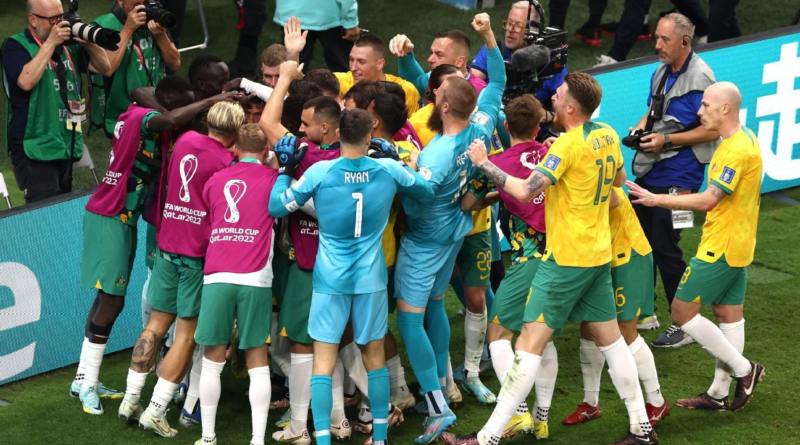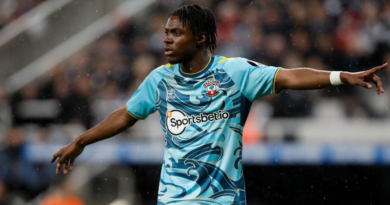The whole world will learn about Australia in clash with Messi's Argentina
DOHA, Qatar — As Australia prepared for an intercontinental playoff against Peru back in June, with a spot at the 2022 FIFA World Cup on the line, a column appeared in national broadsheet The Australian bearing the patronising backhander of a headline: “Go the Socceroos. But who are these blokes?”
– World Cup 2022: News and features | Bracket | Schedule | Squads
Ignoring that its author, as a sports columnist, was ostensibly paid to already know this, it nonetheless gave voice to a mainstream Australia that only deigns to grace football with its attention once every four years. There is always a level of genuine affection and enthusiasm that comes with this opportunity to jump back on the bandwagon during these periods, and it’s always welcomed by true believers hoping for converts. But there’s still a yearning for the days when the team had Australia’s ‘Golden Generation” of talents such as Harry Kewell, Mark Viduka and Tim Cahill in its ranks.
“If you’re not Australian and you don’t know, football in Australia is probably the fourth or the fifth sport after AFL [Australian rules football], rugby league, rugby union, and cricket. Then there’s football. They call it soccer, but it’s football,” Australia coach Graham Arnold said ahead of his side’s upset 1-0 win over Denmark to set up a round-of-16 clash against Lionel Messi‘s Argentina. “To leave a legacy is huge. In 2006 and what that generation did … the kids that grew up [with that] are these kids [playing] in this generation. They were 10, watching these guys in 2006. Those guys were their inspiration.”
This nostalgia for 2006, is understandable. Sixteen years ago it felt like football was on the precipice of achieving something special in Australia. Its men were plying their trade at some of the biggest teams in some of the biggest leagues in world football and its national team had just ended a 34-year hiatus from the world’s biggest sporting competition. For a small (population-wise) country that so often uses sport as a means of reassuring itself of its legitimacy in the international domain, this was a bold new frontier in the planet’s most popular sport.
But this, for now, at least, was the peak. Across the next decade-and-a-half, the game has continued to move along and make progress — especially in the women’s game, with the Matildas one of the most beloved sports teams in the country — but the Socceroos’ trajectory and their name recognition have sloped away. The expectations surrounding them coming into Qatar 2022 were mostly subterranean.
But six months after their identities were being queried, “these blokes” have secured more points in the group stage than the Kewell & Co. ever did in a single tournament. Admittedly, analysing performance and results are two entirely different things, and if you could somehow figure out a way to have the 2006 and 2022 sides face off you’d likely be taking the former. And the contemporary incarnation of the Socceroos can’t have been said to play particularly pretty football in Qatar or to have not benefited from a fair amount of luck.
But fortune favours the bold, and across the past 10 days in Doha, they have also shown that they are not the anonymous pushovers many had considered them to be. Playing a hard-running and physical brand of football based upon pillars of effort, determination and playing for the man beside you, Australia were able to produce an outcome greater than the sum of their parts in back-to-back wins over Tunisia and Denmark. Arnold’s “Aussie DNA” and pragmatic tactical outlook carried the day. They won’t beat you technically, but they’ll beat you if you let them.
In Australia, the fan park screening the matches live in Melbourne’s Federation Square has taken on a cultural significance in and of itself, and cities and towns across the country are racing to meet the subsequent demand to stage their own live sites that can attempt to replicate that cauldron of smoke, fire and joy during Socceroos games.
In Qatar, where the scenes back home have quickly been seized upon as a source of motivation and validation, the squad is a mixture of experienced heads — Mathew Leckie and Mathew Ryan are both set to break the record against Argentina for most-ever Socceroo appearances — and younger players such as Riley McGree and Harry Souttar that have been brought up from the U23s as part of what Arnold calls a “quick fix” to the “massive concerns” in Australia’s junior developmental pathways.
Souttar, in particular, has served as one of the breakout stars of Australia’s campaign and the £20 million valuation that had been placed upon him by Stoke City before his ACL injury in November 2021 has almost certainly returned in the wake of his standout efforts in Qatar. It will now be up to him, as well as Kye Rowles, Aziz Behich and likely Milos Degenek to keep out one of the best attacks in world football, with arguably the greatest player in the world at its heart.
Arnold, though, can perhaps take some solace from the fact that he’s previously come up against Argentina as both a player and a coach with success. At the Tokyo Olympics last year, the 59-year-old was in the dugout as the Olyroos stunned Argentina 2-0 in their opening group game of the tournament, as Lachlan Wales and Marco Tilio provided a high-point for what soon proved a disappointing tournament.
As a player, Arnold was involved in a 4-1 win over Argentina in the Bicentennial Gold Cup in Sydney in July 1988. Featuring a 30-metre screamer from Charlie Yankos to put the Socceroos up 2-1, the game ended with the disaffected Argentines refusing to shake hands with their opponents at the game’s end and their coach, Carlos Bilardo, failing to attend the postmatch news conference. Of course, Argentina would get their own back on Australia five years later when, after being on the wrong end of a 5-0 rout at the hands of Colombia on the final day of South American qualification, they met in a two-legged intercontinental playoff for the right to head to USA ’94.
“I was playing in Belgium at the time,” Arnold recalled in 2020, days after the death of Diego Maradona. “Colombia beat Argentina and Maradona had retired from international football. I think it was going to be out of Colombia and Argentina and we had to play off against either/or. I remember, I was watching it in Europe at the time and the TV cameras went on Maradona in the stands, and he was overweight, he’d been out for several years, he was heavy as anything. And they were singing his name.
“He came out of retirement and I saw some of the training sessions he was doing in Argentina, some of the weight he lost to come here. In ’94, it was probably the thinnest you’d ever seen Maradona. And he came out to Australia, coming out of retirement to play against us, that’s how big a player he was to Argentina.”
– Stream on ESPN+: LaLiga, Bundesliga, more (U.S.)
Maradona, out of the wilderness to save the Albiceleste, would set up Argentina’s goal in a 1-1 draw at the Sydney Football Stadium in the first leg of that playoff, and featured in their 1-0 win in Buenos Aires two-and-a-half weeks later, booking their passage through. Sporting curling locks and a fearsome moustache, neither of which he has anymore, Arnold played the full 90 minutes in both of those fixtures, but couldn’t find a way past Sergio Goycochea in the Argentine goal.
“In Argentina, he begged and pleaded to the Argentine fans not to boo Australia’s national anthem,” recalled Arnold. “Because in Australia he, for the first time, could hear the Argentine national anthem at an away game, and he pleaded with them not to boo our national anthem. And you could hear our national anthem in Buenos Aires.”
Now, 29 years later, Arnold finds himself in the dugout, and considerably more seasoned, coming up against another Argentine legend staging his last stand at a World Cup. After coming up against Maradona on the pitch, a man still heralded as a god in Argentina, he’s now got to figure out a way to stop the second coming.
“It’s just so crazy how similar they are — left footers, same style,” said Arnold. “They’re both incredible players and to compare different generations, it’s all too hard, but I think, probably, they go down as two of the greatest players ever in my lifetime.”
Certainly, most of the eyes turned upon Saturday’s fixture will be directed to Messi and his quest to add football’s biggest prize, one of the few that still elude him, to his trophy cabinet. But it takes two to tango, and even if it will come mostly from the glow of Argentina’s reflected hero, the Socceroos will also get their chance to shine. When the full-time whistle blows at the Ahmad bin Ali Stadium, quite a few more people will know who those blokes are.




